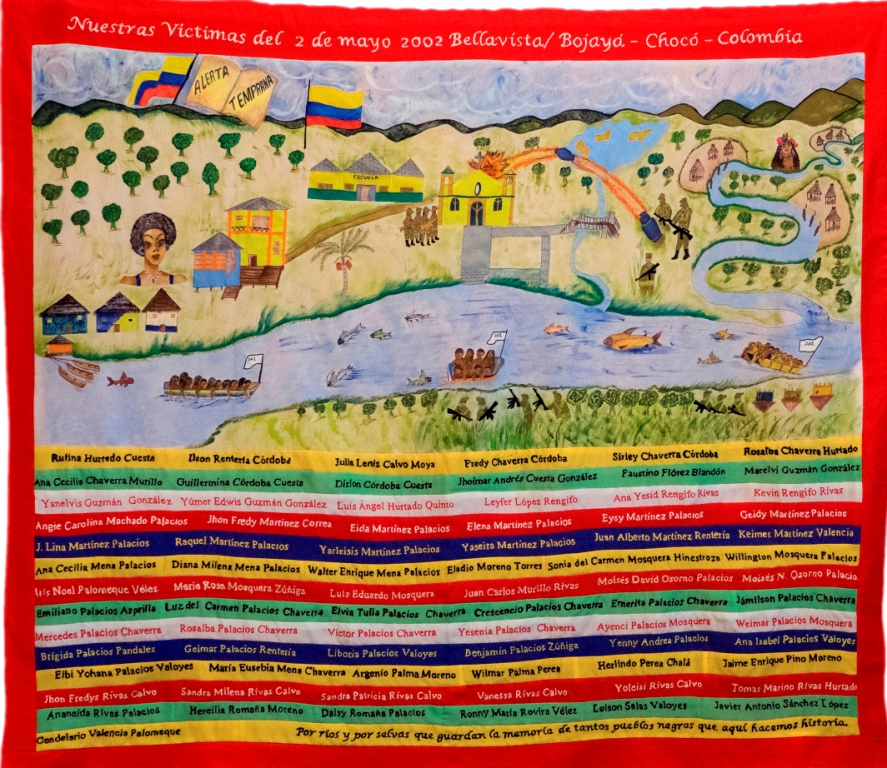Textile
Details

'Nuestras Víctimas 2 de mayo 2002 / Our victims of 2nd May 2002: Bellavista - Bojayá - Chocó' by Group Artesanías / Crafts Choibá and Ursula Holzapfel, Life, Justice and Peace Committee, Quibdó diocese. (Photo: Steve Cagan)
|
| Description: | On May 2, 2002, in the Bellavista area of the town of Bojayá, in the Chocó district of Colombia the Revolutionary Armed Forces of Colombia (FARC) launched a cylinder bomb into a church full of civilians being used as a human shield by the now demobilised United Self-Defence Forces of Colombia (AUC). Over 79 people, including children, were killed in this massacre and 5,771 people were forcibly displaced to Quibdó, the capital town of Chocó district.
https://www.wola.org/analysis/tenth-anniversary-of-bojaya-colombia-massacre/
Before the first anniversary, relatives of the victims displaced to Quibdó embroidered the names of the dead on a large 6 x 2.5 metre fabric. This piece, known as the Bellavista backcloth, has been part of, and continues to be requested for, many commemorative events.
In 2016, these women, driven by a need to: “tell our children and grandchildren what happened” created this smaller piece depicting their memories of the massacre and the identity of the victims. They firmly believe that we need to learn from these memories and pass them on to coming generations so that they will not be repeated. Resolute in their quest of ensuring that the wider world also remembers: “we send it to different places where people are open to hear about our pain.”
As they revisit their traumatic experiences through stitch and fabric, they courageously bear witness: “…mak[ing] history through the rivers and forests that keep the memory of so many black people.” In so doing, they seek to shape a peaceful future in a country scarred by a five decade armed conflict, the longest in the Western hemisphere, in which 280, 619 people have been killed, 45,000 forcibly disappeared and more than seven million displaced.
(“Peace in Colombia: Hopes and Fears” New Internationalist 497, November 2016)
|